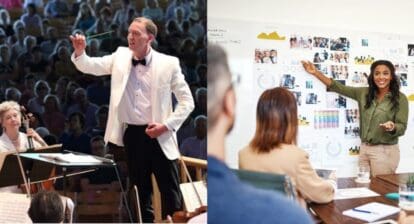 We are used to the term disruption having a negative meaning, especially in the workplace. Disruptive employees need to be counseled on the harm they’ve caused. Disruption slows down the progress of work and splinters the regular progression of a project. These types of disruptions still find their way into business and projects; however, another variety of disruption is opening doors that can change the narrative of how disruptions are viewed.
We are used to the term disruption having a negative meaning, especially in the workplace. Disruptive employees need to be counseled on the harm they’ve caused. Disruption slows down the progress of work and splinters the regular progression of a project. These types of disruptions still find their way into business and projects; however, another variety of disruption is opening doors that can change the narrative of how disruptions are viewed.
Consider that when you look at disruption in the workplace, you are looking at an opportunity for change. Change can make your team feel disconnected or fearful. This is ever apparent in the post-COVID workplace, where more options are available to employees for how and where to work. However, groups that view disruption as an opportunity to innovate the workplace find a more robust path forward. Positive disruptions give teams the ability to expand thinking beyond what has always been done in the past. Through this, they are able to create new ways to work together and new pathways can be forged that reinforce teamwork.
Carolyn Swora, the author of The Rules of Rules of Engagement: Building a Workplace Culture to Thrive in an Uncertain World, reinforces the idea that disruption occurs during change, but that change is that pivotal element that gives leaders the opportunity to evolve. When you fear the change, you create a negative narrative. However, if you view change as a chance to progress, the narrative becomes positive and supports the change. This evolution is especially true as we become more globally connected through technological advances.
In a recent article, Deloitte discusses changes to the workplace in our technologically advanced society. These advances are connecting workers, regardless of location, device, or time zone. We are more connected each other through technology than at any time in history, and with this digital access, the workplace can be remodeled.
The disruption we are all facing now gives us the opportunity to interweave technology, people, and business success for a more unified system change. As changes increase, so do fear and opportunities, however, you have a choice in how you move forward with your business.
When a disruption occurs, there are a spectrum of responses that can occur along with it. On the one hand, the disruption occurs as a narrative where there is an adverse event causing problems, and you feel the need to suppress the person or event. This type of narrative pulls team members backward in an attempt to slow down or stop the change. Going back to the post-COVID scenario as an example, team members want to go back to the way they used to work because it was comfortable. Perhaps they believe any other way won’t work. The change is disruptive, and therefore unwanted. In this view, the difference is viewed as wrong, and there is fear involved. There is a resistance to looking at the situation as one that hold possibilities. The disruption occurs as a fracturing force within the team, attempting to pull the team back toward how things have always been done. Alternatively, when the narrative shifts to focus on solutions, change can move things forward. It is no longer about finding comfort from the known, but instead shifting the view to a focus on how to innovatively move forward.
This other end of the spectrum views disruption as an opportunity to, not only change, but improve how work is done. It looks at the interplay between people, business, and technology, asking questions which find ways to affect the outcome in positive way. Do you look for prospects that benefit both you and your team? How can you integrate differences and disruptions to create an orchestrated environment? These open-ended questions allow room for change and more a effective use of team skills for business success.
In both narratives and in all work, there will be disruption. One story; however, portrays the fear of change, while the other demonstrates an openness to new systems, which results in moving projects forward. The disruption cannot be viewed alone. The dynamics of the people and events surrounding the situation also need to be considered.
Here are a few questions to ask yourself as you start to move forward into viewing disruptions as catalysts to create positive changes. See if you can distinguish which questions lead you to view the disruption as negative versus those that would allow you to see the disruption as an opportunity to make a positive change.
- How much do I wish that we could keep everything the same forever?
- How open am I to set up a new workplace dynamic?
- How willing am I to allow another team members to voice opinions and ideas that don’t fit my working view?
- How often do I work with my team on setting up a plan for their future goals and success within the company?
- Do I prefer to have people who look and think like me at work?
- How do I treat people when they present me with a change in the workplace?
COVID has greatly influenced how disruption will be viewed and managed in the business world moving forward. It brings a mix of fear, innovation, and resistance. As you look at the dynamics of team interactions, consider how a different narrative around disruption in the workplace could play a role in the path you are forging ahead. This is a chance to say goodbye to the days of disruption being viewed as a negative, and instead look at disruption as an opportunity to implement positive change.
I’d love to know what you think. Your comments are welcomed below.






